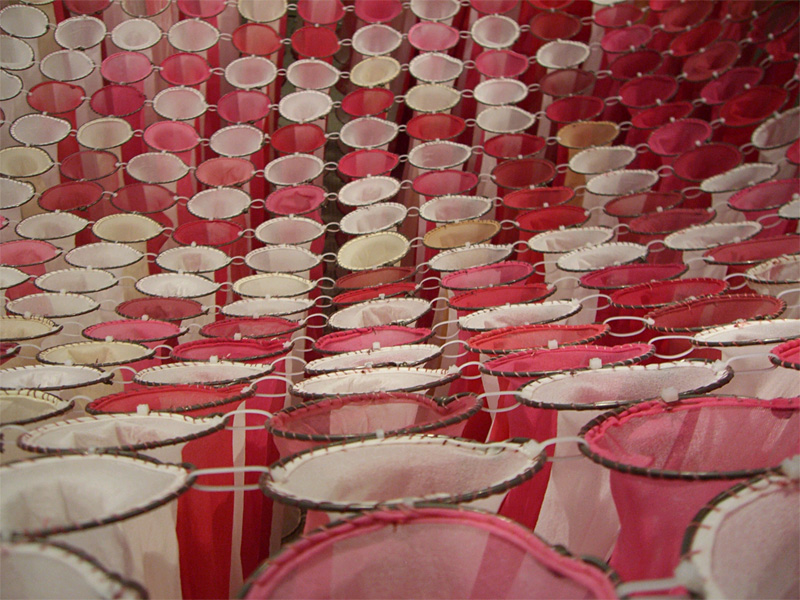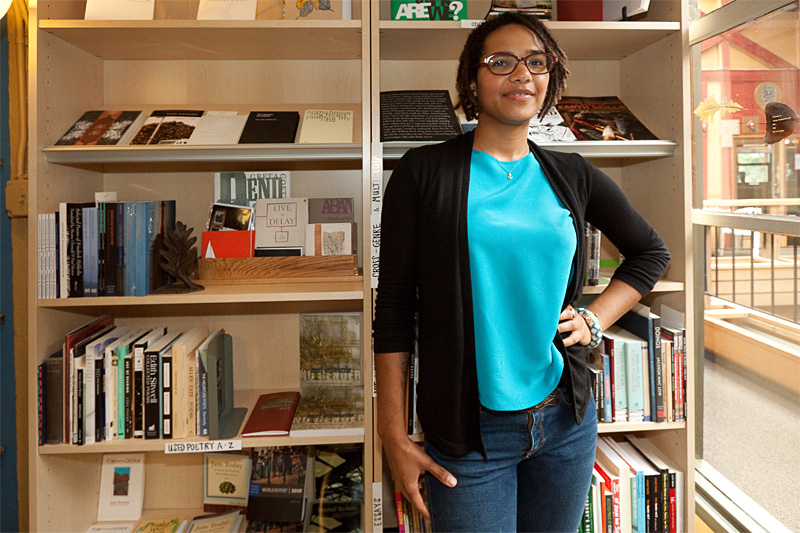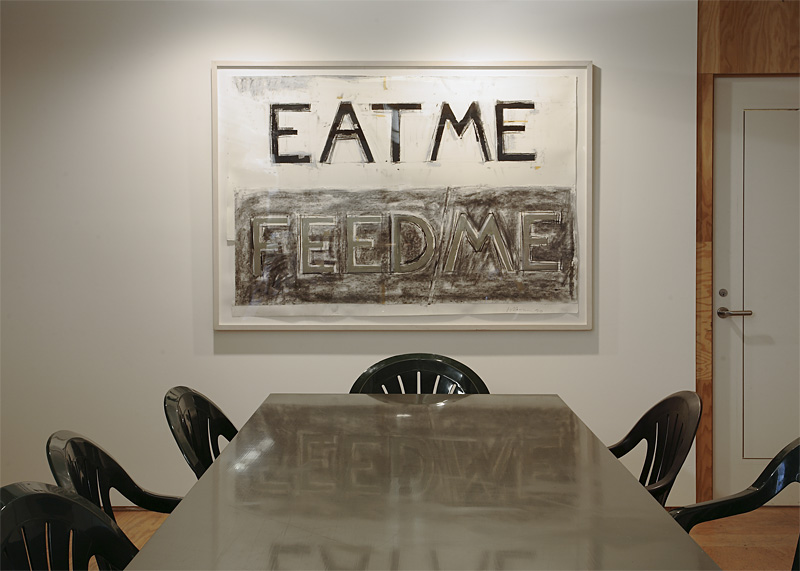Since its founding in 1995, the artist-run cooperative SOIL has seen its membership—and the quality of its shows—wax and wane and wax again. Right now, the organization is 27 members strong, and has been putting on some of its strongest exhibits to date. SOIL has also been expanding beyond its home.
This month, in addition to showcasing three Netherlands-based artists at its main gallery in the Tashiro Kaplan building, SOIL took over ACT Theatre’s Seventh Avenue–facing windows for an installation. Even more ambitious is a show that has been up since March in Georgetown. SOIL in Residence occupies 11,000 square feet of showroom space in the Seattle Design Center that would normally be filled with home furnishings.
Back in February, “one of the center’s tenants vacated over the weekend, unannounced,” explains SOIL member Margie Livingston. The center was about to play host to a popular trade show, the Northwest Designers Expo, and didn’t want to have a bunch of dead space. So Jennifer Randall, an interior designer and former president of Artist Trust, called Livingston to see if SOIL was interested in taking over the rooms. SOIL membership pulled the show together in just three weeks. And since the space still hasn’t been rented out, the show has been extended through the end of June. (UPDATE: A renter has been found! The show has returned to its original close date of May 28.)
Timea Tihanyi’s In Between: Sheets, Strings, and Membranes looks even more at home here than it did in a 2004 exhibit at SOIL’s old gallery on Capitol Hill. Comprising nylons in various shades of pink and white strung among the coils of a bedspring, it’s suspended from the ceiling like a mattress pulled into a curve. (See photo.) This is a sensual piece, about hip-high, rich with color and simple in execution.
Another of Tihanyi’s sculptures employs a bed frame, this time on the floor. On it are set rows of automobile-seat headrests, cast in porcelain. Each headrest—a lovely organic shape, with soft curves—sits atop a single bedspring, hinting at the precariousness of car travel. (Also at the precariousness of sleep: It’s called Insomnia.) We are almost as comfortable driving as sleeping, the piece might suggest. Or as uncomfortable: The undulating surface is threatening in its own breakability.
The 2010 version of Ellen Ziegler’s hypnogogue consists of mirrored shelves painted with geometric shapes. Reflections of the paintings are cast upward, while shadows of the same shapes are replicated below, creating beautiful abstractions. But the work is marred by its crude installation: Heavy, square metal brackets attach the shelves to the wall.
Cable Griffith, exhibitions director at the Kirkland Arts Center, goes big here, with a landscape painting crafted on many sheets of transparent vinyl, hanging in the center of the gallery. It’s an object to walk around. In Land of Suspended Belief: The Temple, an orange structure depicted in thick-lined paint stands on a hill populated with flowers rendered in curves. Both the architecture and the plants are rendered as accumulations, the images piling up from each individual vinyl painting to make the whole. It’s an ideal world, nearly identical when seen from both sides.
In Study for falling grid, Livingston has taken one of the geometric string sculptures that she often depicts in her paintings and covered it in white paint. The string is collapsed under the paint’s weight, and the lines have gone from straight and square (as they are in her paintings) to loose and liquid. This work is a sagging, gridded cube, slouching with one corner poking up, a little like a pyramid with a tangle in its belly.
A side room at the exhibit is the site of an ongoing collaborative drawing project. A vinyl tree has been affixed to the wall, lengths of cut paper are looped across the space, and contributions are crafted from string or stickers or tacks pushed straight into the wall.
Hung low in one corner of this room is a collage made from magazine cutouts. An illustration of a cowboy tossing a lasso (from an ad for NYC’s Tony Shafrazi Gallery) is opposite another gallery ad, depicting a sketch of what appears to be Michael Jackson as a young boy. Across his chest, someone has written in Sharpie, “I want you back!” Clouds inked into Jackson’s afro replicate clouds in the cowboy portrait, and the whole thing is wearing a brown fringe skirt, from another page advertising the Georgia O’Keefe Museum. It’s unclear how much of this collage is repurposed magazine ads, and how much has been altered, though it seems to bear the mark of several hands. (Like all the work in this room, it’s unsigned.) This might be my favorite piece in the show. SOIL is a collaborative group, with a history of shifting venues and members joining and leaving: Somehow this piece resonates with all that.








